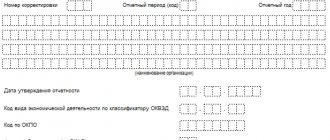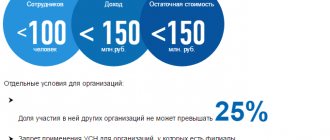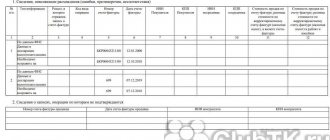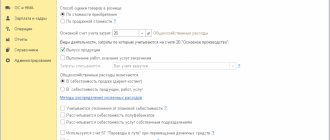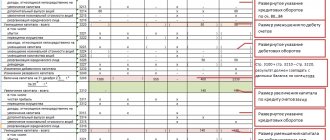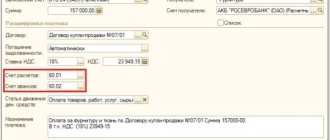Simplified reporting can be submitted by small businesses, non-profit organizations and participants in the Skolkovo project that are not subject to the restrictions established by clause 5 of Art. 6 of the Federal Law of December 6, 2011 No. 402-FZ. Simplified reporting forms used for the 2021 report are contained in Appendix No. 5 of Order No. 66n of the Ministry of Finance of the Russian Federation dated July 2, 2010 (as amended on April 19, 2019). Line codes in the simplified financial statements of the company are indicated independently. We will tell you what is included in each indicator and how to choose the necessary encoding for it.
Who works for the simplified tax system in 2021
The use of a simplified regime by organizations and individual entrepreneurs is possible if a number of requirements are met:
- number of employees less than 100 people;
- annual income not exceeding 150 million rubles;
- use of fixed assets with a residual value of less than 150 million rubles in production activities;
- lack of functioning branches;
- the share of third parties in the authorized capital is less than 25%.
The transition to a simplified taxation regime is possible after submitting an application to the Federal Tax Service: within 30 days from the date of termination of activity with payment of UTII and until the end of the current year in other cases.
In addition, the income received for the first 3 quarters of the current year should be summed up: they should not exceed a fixed amount of 112,500,000 rubles. Until 2021, the limit was calculated as multiplying the deflator coefficient by the income limit established for the previous period. From the beginning of 2021, the deflator is subject to freezing, and from 2021 it will be equal to one.
In case of non-compliance with any requirement, the business entity loses the right to apply the simplified tax system and is obliged to switch to the general taxation regime from the beginning of the quarter in which the violation occurred.
Analysis of the structure and dynamics of property and sources of financing
An assessment of the structure and dynamics of property (assets) gives an idea of the ratio of fixed and working capital, the share of inventories in current assets, as well as changes in their value for the analyzed period.
The structure and dynamics of sources of financing (liabilities) shows the shares of own, borrowed and borrowed funds, as well as their changes over the analyzed period, which is a well-known technique for analyzing financial statements.
However, this information is not particularly important when assessing the activities of a small enterprise. The authorized capital of a small enterprise is usually small. They carry out their current activities mainly from their own funds and accounts payable. Trade and purchasing activities and settlement operations, as a rule, are carried out on an advance payment basis or through obtaining a commercial (commodity) loan. Therefore, a very important factor is maintaining liquidity and solvency, which characterize the ability of an enterprise to timely and fully make payments on current obligations.
Basic recommendations
The balance sheet, as one of the reporting forms of the simplified regime, must be submitted to the Federal Tax Service and Rosstat before April 1 of the next year.
Failure to submit the reporting form is fraught with administrative liability: a fine of 200 rubles for an overdue document for the tax authorities and up to 5,000 rubles for statistical authorities. A distinctive feature of the simplified balance sheet is the reflection of financial information in an enlarged manner: each line contains aggregate information of an entire group of items. Rounded values are indicated in thousands or millions of rubles.
The balance sheet formed by the simplifier contains two sections - active and passive items. An asset characterizes the subject’s property, its composition and value. The passive, in turn, reveals the sources through which the property was acquired. An indispensable condition is the equality of assets and liabilities.
The document is formed on an accrual basis as of the reporting date in dynamic comparison with data from similar periods of previous years: the 2021 balance sheet will contain information as of the end of the current year, December 31, 2021 and 2021.
Before drawing up form 0710001, it is necessary to close (reform) accounts 90, 91 and 99 with the formation of a final balance, which will subsequently serve as the basis for the balance sheet.
stroki_ofr.jpg
Indicators with a negative value are indicated in parentheses.
Report on the intended use of funds (OKUD 0710003)
The form is filled out by NPOs and firms that received targeted funds. Other companies do not need to submit these reports. The lines contained in this form do not need a detailed description, so we will provide a brief breakdown of the indicators in Table 3.
Line codes and their decoding
The balance sheet reporting form contains a “Code” column, which is filled out based on the data of Order No. 66n. It is necessary to indicate the code of the indicator that has the largest share of the group of articles. Reporting form 0710001 is divided into lines:
- Tangible non-current assets (code 1150). They consist of the residual value of fixed assets, unfinished construction work, design and survey developments, and undocumented acquisition of fixed assets.
- Intangible, financial and other non-current assets (code 1170). Information about funds that do not have a material expression and are used for a long time is indicated. This includes licensed computer programs, innovative technologies, and securities.
- Inventories (code 1210). Represented by raw materials, materials, semi-finished products, finished products and goods.
- Cash (code 1250). This type of asset consists of cash in the cash registers of organizations, amounts in bank accounts and deposits.
- Financial and other current assets (code 1230). This balance sheet indicator is formed by the enterprise’s receivables, prepayments to counterparties for future work and VAT on the purchase of goods, unrecorded tax overpayments, detected shortages, financial investments for a period of no more than a year and other assets that are not reflected in other balance sheet lines.
- Asset balance (code 1600). This is the total value of the enterprise's working and non-current assets.
- Capital and reserves (code 1300). Represented by authorized, reserve and additional capital, and the amount of authorized capital must be equal to the value contained in the constituent documents. If, during the operation of the enterprise, retained profit or loss has arisen, these amounts must also be reflected in line 1300.
- Long-term borrowed funds (code 1410). This includes credit and borrowed funds whose repayment period exceeds 1 year.
- Other long-term liabilities (code 1450). Other obligations not specified in line 1410 are reflected. This may include, for example, accounts payable to counterparties that arose more than a year ago.
- Short-term borrowed funds (code 1510). Credit and borrowing resources with interest due, which must be repaid within a year, are to be reflected here.
- Accounts payable (code 1520). The amount of short-term debt to counterparties is indicated.
- Other current liabilities (code 1550). An example would be a situation where a business entity receives targeted funds and undertakes, in turn, to ensure the readiness of the financing object within 12 months.
- Liability balance (code 1700). Reflects a set of long-term and short-term sources of obtaining financial resources.
Where are the line codes?
Indicators about the company's activities are grouped into consolidated items reflected in the reporting. All information is provided in a generalized form. According to clause 5 of Order No. 66n, in simplified financial statements, the organization enters line codes independently. The numerical value chosen by the company must correspond to the prevailing indicator in the specific weight in the completed article of each form. Line codes in simplified financial statements for 2021 are selected from Appendix No. 4 to Order No. 66n.
Step by step filling
Let's look at the algorithm for creating a balance sheet using the example of Uproshchenets LLC. The organization has been operating since January 1, 2017 and applies the simplified tax system. In the process of preparing financial statements for 2017, the company’s accountant must perform the following actions.
Create a balance sheet as of December 31, 2017; account balances are to be posted across balance sheet lines.
| Check | Balance | Check | Balance | Check | Balance |
| Dt 01 | 599900 | Dt 43 | 85000 | Kt 69 | 80000 |
| Kt 02 | 20140 | Dt 50 | 10000 | Kt 70 | 259000 |
| Dt 04 | 100340 | Dt 51 | 255000 | Kt 80 | 55000 |
| Kt 05 | 3000 | Dt 58 | 150000 | Kt 82 | 15000 |
| Dt 10 | 22000 | Kt 60 | 155000 | Kt 84 | 140000 |
| Dt 19 | 6000 | Kt 62/advance | 500620 |
Based on the balance sheet balance, determine the asset indicators taking into account the following rules:
- line 1150 is defined as the difference between the value of non-current assets and the depreciation accrued on them: Dt 01 - Kt 02 = 580 thousand rubles;
- line 1170 includes the amount of intangible assets minus depreciation and the amount of financial investments: (Dt 04 - Kt 05) + Dt 58 = 247 thousand rubles;
- line 1210. It should reflect the cost of the enterprise’s material assets and finished products produced: Dt 10 + Dt 43 = 107 thousand rubles;
- line 1230 contains the amount of VAT paid when purchasing goods, works, services from the supplier: Dt 19 = 6 thousand rubles;
- line 1250 is formed by summing the funds at the cash desk and in current bank accounts: Dt 50 + Dt 51 = 265 thousand rubles;
- line 1600, according to which the book value of current and non-current assets amounted to 1205 thousand rubles;
Determination of indicators of the passive section of the balance sheet:
- line 1370 includes the amount of authorized and reserve capital, as well as the organization’s retained earnings: Kt 80 + Kt 82 + Kt 84 = 210 thousand rubles. (the line code is determined by the indicator that has the largest share in the group of items - retained earnings);
- line 1520 contains the remaining account balances - the amount of accounts payable to suppliers and employees, advances received from customers, as well as obligations to pay insurance premiums: Kt 60 + Kt 62/advances + Kt 69 + Kt 70 = 995 thousand rubles;
Comparison of data in lines 1600 and 1700: the asset and liability of Uproshchenets LLC is equal to 1205 thousand rubles, which means the balance is correct.
Since Uproshchenets LLC was registered in 2021, the balance sheet columns for the previous 2 years will not be filled in. Empty cells should be filled with dashes. Subsequently, when filling out these columns, the data should be taken from previous reporting forms adopted by regulatory authorities.
The simplified balance sheet visually looks like this:
Documents for download (free)
- Simplified balance sheet
- Sample simplified balance sheet
Calculation of liquidity and solvency ratios
The concept of “organizational insolvency” is associated with the assessment of solvency, the assessment of which uses two criteria: insufficient property to pay the debt and the inability of debtors to pay. The degree of solvency for current liabilities of Ktl is defined as the ratio of current borrowed funds (short-term liabilities) to average monthly gross revenue [2]. However, from the financial results statement we can only obtain the net revenue indicator (see Table 3).
The liquidity of an asset is understood as its ability to be transformed into cash. The shorter the period of possible transformation into cash, the higher the liquidity of assets. The liquidity of an enterprise means that the enterprise has current assets in an amount sufficient to pay off current liabilities [1]. To assess the level of liquidity, indicators of absolute, critical and current liquidity are calculated.
Current solvency ratio (Ktp) = (P1+P2)/(N/T)
Absolute liquidity ratio (Ka) = A1/(P1+P2)
Critical liquidity ratio (Cl) = (A1+A2)/(P1+P2)
Current liquidity ratio (Ktl) = (A1+A2+A3)/(P1+P2)
where, P1 - accounts payable; P2 - short-term borrowed funds; N—revenue; T is the number of months in the period under review; A1 - cash, cash equivalents; A2 - financial investments, accounts receivable and other current assets; A3 - reserves.
Calculation by balance lines:
Ktp = (line 1510+line 1520) / (line 2110/12 months) Ka = line 1250 / (line 1510+line 1520+line 1550) Kl = (line 1250+line 1230) / (line 1510+line 1520+line 1550) Ktl = (line 1250+line 1230+line 1210) / (line 1510+line 1520+line 1550)
As a result, we obtain the following values:
KTP: 2011 – 3.5; 2012 – 2.8 Ka: 2011 – 0.5; 2012 – 0.7 Class: 2011 – 0.6; 2012 – 0.9 Ktl 2011 – 2.2; 2012 – 2.6
Based on the calculated indicators, we can draw a conclusion about the liquidity of funds of the analyzed enterprise and its solvency for the reporting year.
The absolute liquidity ratio (Ka) characterizes the degree to which current liabilities are covered by cash and cash equivalents as of the reporting date. A value of 0.2-0.5 or more is considered standard.
The critical liquidity ratio (CL) characterizes the degree to which current liabilities are covered by the most liquid assets and expected receipts from buyers. The recommended value of the indicator is greater than or equal to 1.0.
The current liquidity ratio (CLR) characterizes the degree to which current liabilities are covered by working capital, and the optimal ratio is 2/1.
However, the balance sheet reflects the position of current assets and current liabilities at the end of the month, and the situation may change significantly subsequently. These may be problems with delayed payments from buyers and customers, or the emergence of any financial difficulties. To assess solvency, credit organizations usually use current account statements for the analyzed period, analyzing the flow of funds in the organization's current accounts.
Zero balance
Temporary suspension of activities does not relieve the enterprise from the obligation to provide financial statements. A zero balance must be provided to Rosstat and the territorial tax office. Otherwise, regulatory authorities have the right to apply sanctions to the debtor in the form of penalties and blocking of a bank account.
It should be noted that the balance cannot be zero even if activities are stopped. At a minimum, it reflects the authorized capital of the organization in lines 1300 of liabilities and 1250 of assets. If for some reason it is not entered by the founders, then the assets of the balance sheet reflect the receivables of the founders on line 1230. The remaining lines are filled with dashes.
Even if they operate under the rules of a special regime, entities are not required to use simplified forms for reporting. In addition to the balance sheet and income statement, they have the right to draw up other documents in the form of appendices and explanations, if this method of reflecting information is more convenient.
How to prepare reports for the simplified tax system in 1C - in this video.
stroki_otchet_o_celevom_ispolzovanii.jpg
Material information affecting the reliability of reporting is disclosed in separate lines or in additional appendices. The company makes its own decision about what data to provide in more detail. The company sets the code in its reporting according to the indicator that has the maximum value in the line of the form containing the combined data. An organization can refuse to use simplified forms by choosing full accounting reporting and enshrining this in its accounting policies.
Calculation of coefficients characterizing financial stability
To assess financial stability, the following relative indicators can be used to characterize the state of working capital, the structure of funding sources, and the financial independence of the enterprise:
| Name | Recommended value | Formula |
| Coefficient of provision of current assets with own working capital (Kss) | greater than or equal to 1.0 | Kss = SOS/OA, SOS = Capital and reserves - Non-current assets; |
| Coefficient of provision of inventories with own working capital (Kmz) | from 0.6 to 0.8 | Kmz = SOS/W |
| Equity capital agility ratio (Kmsk) | 0,5 | Kmsk = SOS/KR |
| Long-term borrowing ratio (Kdz) | less than or equal to 1.0 | Kdz = Long-term borrowed funds / Equity funds |
| Autonomy coefficient (Ka) | greater than or equal to 0.5 | Ka = SC/WB |
| Financial activity ratio (financial leverage) (Kfa) | Kfa = (DZS+KZS)/KR | |
| Financial stability coefficient (share of long-term sources of financing in assets) (Kfu) | from 0.5 to 0.7 | Kfu = (KR+DZS)/VB |
| where, SOS - own working capital; OA - current assets; Z - reserves; KR - capital and reserves; SK - equity capital; VB - balance sheet currency (total cost of funding sources); DZS - long-term borrowed funds; KZS - short-term borrowed funds | ||
Let us summarize the procedure for calculating the considered coefficients using the corresponding balance sheet line codes:
Kss = (line 1300-(line 1150+line 1110)) / (line 1210+line 1250+line 1230) Kmz = (line 1300-(line 1150+line 1110)) / line .1210 Kmsk = (p.1300-(p.1150+p.1110)) / p.1300 Kdz = p.1400 / p.1300 Ka = p.1300 / p.1700 Kfa = (p.1410+p. 1510) / line 1300 Cfu = (line 1300+line 1410) / line 1700
When using the indicated indicators of financial stability in analytical practice, it is necessary to keep in mind that they reflect the financial condition as of a date that has already passed. Therefore, it is advisable to consider them in dynamics over several reporting periods, which will indicate a certain consistency in the activities of the enterprise. In addition, the recommended values of these coefficients are conditional and depend on the characteristics of financial and economic activities, on internal and external economic factors.
